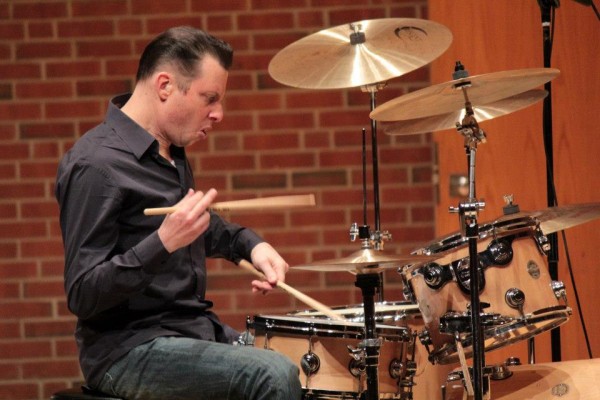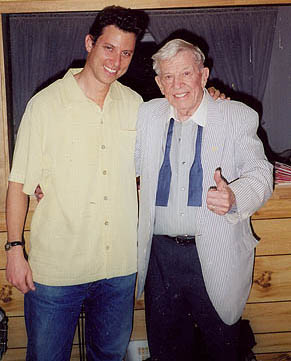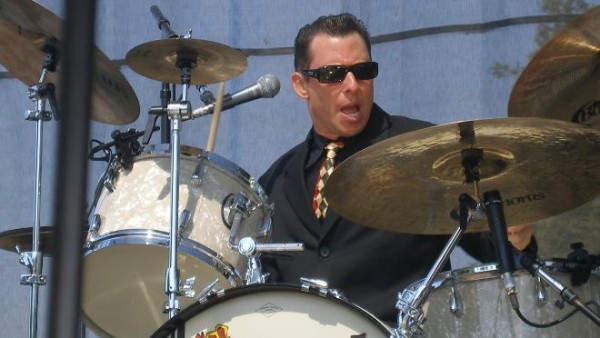Muppets Animal versus Rita Moreno
One of my all time favorite clips! Animal gets into it with the spicy Rita Moreno, and the gloves come off!
Bonham and the Quarter Note Pulse
So, if you know me at all, you probably know that one of my favorite concepts to talk about as an educator is the QUARTER NOTE PULSE. This clip provides a fine example of how the approach toward “swinging” four quarter notes begun in the 1920s and ’30s was still going strong into the modern rock era.
Here’s Led Zeppelin playing “How Many More Times” in 1969. Note John Bonham’s RH on the ride cymbal. His technique (what I refer to as “throw-up”) belies an upbringing based in jazz studies and the influence of swinging drummers like Gene Krupa, Max Roach and Earl Palmer (remember, there was no such thing as a “rock drummer” or “rock technique” when Bonham was a lad in mid-fifties England). Even when the band fully kicks in to the groove, Bonham’s approach is still coming from a “swung 8th” perspective. It’s an important distinction to make, because the jazz/swing quarter note underpinning is what makes so much of 1950s and ’60s rock’n’roll so memorable.
The upshot is this: If you love Bonham, then do some research and learn what influenced him. You’ll discover some intricacies in rock you never realized, and will improve your playing as a result!
For a deeper discussion of my approach to this topic, check out the recent FREE LIVE LESSON I recently recorded with the good folks at Drumeo: http://bit.ly/1WLRukC
History of the Drumset – Part 12 – Double Bass
While it may seem like double bass is a rather new invention, it’s origins can be traced back to Louie Bellson. Bellson wrote and debuted the first piece to feature double bass in the early ’50s when he was with Duke Ellington’s orchestra!
For double extra credit, what was the name of that piece?
Singing And Snapping
Okay – big thought today. It’s a concept I put to all my jazz students, accompanied by a series of exercises called “Singing and Snapping.” Check it out and let me know what you think:
When practicing jazz comping figures on the snare, most drummers don’t think about the LENGTH of the notes they’re playing (quarters vs. 8ths, for example), only which BEAT they’re playing ON (the “and of 2,” for example). In other words, rather than thinking of each exercise as a “melody” (the way the other instrumentalists in the band would), they are only thinking about the placement of the notes – more like a math problem than music. What typically ends up happening is that the entire pattern sounds very staccato and the snare is much too loud compared to the other limbs. In order for us to express rhythmic phrases with a JAZZ awareness (meaning, the same as a sax or piano player would), we have to take into account the note LENGTHS (8th=short, Quarter=long) when we play them. The way to create this distinction is to first SING the phrases in the manner or other instrumentalists. Once we start expressing the notes as MUSIC (rather than simply rhythmic ideas), our hands will naturally follow in creating the appropriate feel. Get it?
History of the Drumset – Part 11, 1948 – Rhythm & Blues
While Bebop music was exploring the boundaries of jazz music, it didn’t appeal to the average person who wanted to go out on a Friday night and dance to the music. However, another style also evolved from the big band genre while retaining the dance feel — Rhythm & Blues!
Historical Context
One of the things that I think is important when you talk about drumming or the rhythm section is you have to put a historical context onto it. A lot of students are told, “Well here’s this style and here’s that style.” But if they can’t understand how the instrument was evolving at that time or what was happening in the rhythm section at that time, they have kind of a disconnect. It doesn’t paint a full picture.
(photo: Dino Petrocelli)
Learning From Legends
In terms of be-bop there’s a lot of material out there, but in general nothing had been written about what I was wanting to know. So in the late ‘90s I began interviewing the drummers who had played on these records that had influenced us. The oldest guy I interviewed was Johnny Blowers who was 94 years old at the time. He had played with Louis Armstrong and Sidney Bechet and had learned press roll patters from Zutty Singleton, who we consider to be one of the first great New Orleans jazz drummers going back to the teens!
The Royal Crown Revue Education
Studying with Freddie Gruber dovetailed beautifully with my joining Royal Crown Revue because that band was focused on understanding many different classic styles of playing – from R&B, be-bop, and rockabilly to big band. So what was cool was that I could ask Freddie about all of these artists that we were exploring as a band and he KNEW them all – everybody from Papa Jo Jones to Charlie Parker – he had hung out with them all and had great stories to tell, so it was a really wonderful opportunity for me.
Led Zeppelin’s “Rock and Roll”
One of the ways that I start some of my clinics is I’ll play the first 15 seconds of Led Zeppelin’s “Rock and Roll” from 1972. Everybody knows John Bonham’s famous drum intro for that song. And then I’ll play Little Richard’s “Keep a Knockin’ (but You Can’t Come In)” from 1956 which literally starts, almost note for note, with the same drum rhythm. Then I put on Louis Jordan’s “Keep A Knockin’ But you Can’t Come In” from 1937 which has a cool little drum lick in it. In 90 seconds I’ve taken the audience from 1972 back to 1937 and shown them a direct lineage of influence and give them kind of an “a-ha!” moment.





